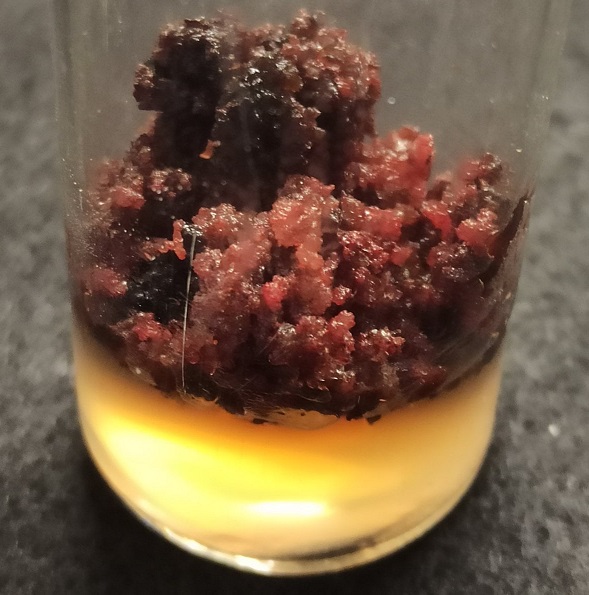This is Echium plantagineum - a rare herbaceous alpine plant commonly known as purple viper's-bugloss or Paterson's curse. More precisely, what grows in the laboratory of the Institute of Molecular Biology and Genetics (IMBG) Department of Cell Population Genetics is plant tissue culture.
Echium is a source of shikonin, a compound that has been used as a red-purple dye for ages. People in the Far East used it to dye fabric as early as the third millennium BC.
Shikonin and its derivatives contained in this plant have anti-inflammatory, antitumor, wound healing, antiviral, and antifungal effects and are used by famous French, Japanese, and Israeli brands to make medical cosmetics, as well as to produce wound healing ointments.
In nature, this substance is synthesized only in the bark of the Echium root and has a protective function in the plant. The amount of shikonin in natural raw materials is very small.
Oksana Poronnik, a senior research fellow at IMBG, spent four years developing an Echium callus tissue and finally succeeded! The callus culture she created accumulates 40 times more shikonin than a natural plant.
Herbal medicines have become a global trend and Ukrainian scientists are using plant cell biotechnology for the propagation of rare medicinal plants to obtain raw materials for drugs and phytopreparations. The lab is currently working with more than 10 species of plants, and that number is growing.
All the plants they work with are in the Red List of rare and endangered species. As such, the active components of rare plants in the quantities required by pharmaceutical production can be grown only in vitro, by microclonal propagation.
“This technology can be applied to any plant that inhabits the Earth, even in the form of a single bud or twig. From one bud you can get 10-20 thousand plants a year,” says the head of the Department of Cell Population Genetics Dr. Viktor Kunakh.
“This technology was developed in the 1970-80s, and it was tested at that time at IMBG. Then we had more than 50 species of rare plants in culture in vitro. In the 1990s, I managed to preserve samples that I considered to be the most important and which no one else in the world has.”
Photo by Oksana Poronnik: biomass of Echium plantagineum, each cell of which synthesizes shikonin pigment

